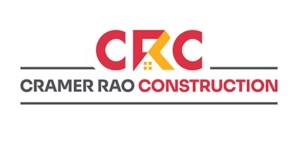Are you concerned about the unpredictable nature of labor costs in the construction industry in Kenya? Managing fluctuations in construction labor costs may seem challenging, but it is crucial for the success of your projects. By understanding the factors that affect these fluctuations and implementing effective strategies, you can mitigate risks and ensure profitability. In this guide, we will explore the key factors influencing labor costs in Kenya’s construction industry and provide you with practical tips for managing these fluctuations. With the right project management techniques and a proactive approach, you can navigate the complexities of labor cost fluctuations and achieve your goals.
Key Takeaways
- Market demand and inflation are significant factors influencing labor costs in the Kenyan construction industry.
- Strategies for managing labor cost fluctuations include budgeting techniques, contract negotiations, monitoring labor market trends, and data-driven analysis.
- Understanding the Kenyan construction industry involves compliance with regulations, workforce planning, and investing in skills development to reduce reliance on external labor.
- Effective project management, including optimal resource allocation, planning and scheduling, and embracing technology solutions, contributes to minimizing labor cost fluctuations and ensuring project success and profitability.

Factors Affecting Labor Cost Fluctuations
To effectively manage fluctuations in construction labor costs in Kenya, you need to understand the factors that impact these cost variations. One of the key factors affecting labor cost fluctuations in the construction industry is market demand. When there is high demand for construction projects, the labor market becomes more competitive, leading to an increase in labor costs. Conversely, when there is low demand, labor costs tend to decrease as contractors compete for a limited number of projects.
Another factor that significantly impacts labor costs is inflation. Inflation refers to the general increase in prices of goods and services over time. As the cost of living rises, laborers demand higher wages to maintain their standard of living. This increase in wages directly affects labor costs in the construction industry.
It is important to note that market demand and inflation are interrelated. When the economy is booming and the demand for construction is high, inflation tends to rise. This, in turn, results in higher labor costs. On the other hand, during an economic downturn, both market demand and inflation decrease, leading to a decrease in labor costs.
Understanding these factors and their impact on labor costs is crucial for effective management of construction projects in Kenya. By analyzing market demand and monitoring inflation rates, contractors can anticipate labor cost fluctuations and adjust their budgets accordingly. This data-driven approach can help mitigate the financial risks associated with labor cost variations and ensure the successful completion of construction projects.
Understanding the Kenyan Construction Industry
To understand the Kenyan Construction Industry, you must examine the key factors that shape its operations and growth. One crucial aspect is the Kenyan construction regulations, which play a significant role in governing the industry. These regulations ensure that construction projects adhere to safety standards, environmental regulations, and building codes. Compliance with these regulations is important for the industry’s reputation and the safety of construction workers and the public.
Another important factor to consider is the construction labor market trends in Kenya. The industry heavily relies on skilled and unskilled labor, and understanding the dynamics of the labor market is crucial for managing labor costs. Currently, there is a high demand for construction workers due to the country’s infrastructure development projects, urbanization, and population growth. This demand has led to increased competition for labor, resulting in rising wages and labor costs.
Furthermore, the Kenyan construction industry is experiencing a shortage of skilled labor. This shortage is partly due to the lack of adequate training and education programs to meet the industry’s demands. As a result, companies often have to invest in training and upskilling their workforce, which can further increase labor costs.
Strategies for Managing Labor Cost Fluctuations
By understanding the construction labor market trends in Kenya, you can effectively manage the fluctuations in labor costs. To help you navigate these fluctuations and maintain control over your construction project budget, consider the following strategies:
- Implement budgeting techniques: Develop a detailed budget that takes into account potential labor cost fluctuations. Include a contingency fund to cushion against unexpected increases. Continuously track and analyze labor costs throughout the project to identify any deviations from the budget. This will enable you to make timely adjustments and avoid cost overruns.
- Negotiate contracts: Negotiate labor contracts with suppliers and subcontractors that provide flexibility in labor costs. Consider including provisions for cost adjustments based on market fluctuations or changes in labor laws. By negotiating favorable terms, you can mitigate the impact of labor cost fluctuations on your project budget.
- Monitor labor market trends: Stay informed about the current labor market conditions and trends in Kenya. Keep track of factors such as changes in wages, availability of skilled labor, and government regulations that may affect labor costs. This information will help you anticipate and prepare for potential labor cost fluctuations.
Importance of Effective Project Management
Effective project management is crucial for successfully managing fluctuations in construction labor costs in Kenya. Project efficiency and resource allocation are key factors that contribute to the overall success of a construction project.
Efficient project management ensures that resources, including labor, materials, and equipment, are used optimally to complete the project within the allocated budget and timeline. By effectively managing these resources, construction companies can minimize labor cost fluctuations caused by factors such as inflation, market demand, and labor shortages.
One aspect of project efficiency is effective planning and scheduling. By carefully planning the project timeline and breaking it down into manageable tasks, project managers can allocate resources more effectively. This allows for better coordination and utilization of labor, reducing the risk of cost overruns due to unexpected labor shortages or delays.
Resource allocation is another critical element of effective project management. By analyzing the project requirements, project managers can allocate labor resources based on the specific skills and expertise needed for each task. This helps to minimize the risk of underutilization or overutilization of labor, which can lead to increased costs.
Additionally, effective project management involves regular monitoring and control of the project’s progress. By tracking labor costs and comparing them to the budgeted costs, project managers can identify any deviations and take corrective actions to mitigate the impact of fluctuations in labor costs.
Ensuring Project Success and Profitability
You can ensure the success and profitability of your construction project in Kenya by implementing effective strategies to manage fluctuations in labor costs. Maximizing efficiency is key in overcoming labor shortage challenges and maintaining profitability. Here are three strategies to consider:
- Workforce planning: Conduct a thorough analysis of your project’s labor requirements and forecast the number of workers needed at each stage. This will help you identify potential labor shortages in advance and allow you to take proactive measures such as hiring additional workers or subcontracting certain tasks.
- Skills development: Invest in training and development programs to enhance the skills of your existing workforce. By equipping your employees with the necessary skills and knowledge, you can increase productivity and reduce the reliance on external labor, mitigating the risks associated with labor shortages.
- Technology adoption: Embrace technology solutions that can streamline processes and improve efficiency. For instance, using project management software can help you track labor costs, monitor productivity, and identify areas for improvement. Additionally, consider implementing automation technologies to reduce manual labor requirements and increase productivity.
Conclusion
We understand the challenges posed by fluctuations in construction labor costs in Kenya. Our expert team is dedicated to implementing effective strategies that mitigate risks and control expenses, ensuring your projects stay on budget. We provide comprehensive insights and proactive solutions tailored to your specific needs. Contact us today to learn how we can help you manage labor costs efficiently while maintaining the quality and timelines of your construction projects. Choose Cramer Rao Construction Ltd. for a smarter approach to labor cost management.


